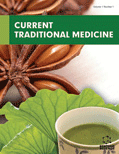
Abstract
The plant Terminalia chebula has been used traditionally in many regions of the world for its therapeutic properties, especially in India. Its therapeutic and health-promoting potential has been recognized for centuries, and modern research continues to unveil its numerous benefits. One of the most significant applications of this plant is its antimicrobial and antioxidant potential. The plant contains high levels of phenolic compounds and flavonoids, which scavenge harmful free radicals in the body, reducing oxidative stress and cellular damage. This antioxidant action contributes to its anti-inflammatory effects, making it beneficial for a wide range of conditions, including arthritis, cardiovascular diseases, and neurodegenerative disorders. Furthermore, Terminalia chebula exhibits antimicrobial activity against various bacteria and fungi, including those responsible for common infections. It has been used to treat respiratory infections, urinary tract infections, and skin ailments. Its broad-spectrum antimicrobial effects make it a valuable natural remedy for combating microbial pathogens. Moreover, Terminalia chebula shows potential in managing diabetes and promoting cardiovascular health. Studies have indicated its ability to regulate blood sugar levels, improve insulin sensitivity, and reduce lipid abnormalities. These properties make it a promising adjunct therapy for individuals with diabetes or at risk of heart disease. In conclusion, Terminalia chebula possesses remarkable therapeutic and health-promoting potential. Its antioxidant, anti-inflammatory, antimicrobial, and digestive benefits make it a valuable natural remedy for various ailments. While research on Terminalia chebula is ongoing, its long-standing use in traditional medicine and emerging scientific evidence solidify its status as a potent medicinal plant with diverse applications in promoting overall well-being.
Keywords: Terminalia chebula, antibacterial, anti-inflammatory, phytochemicals, pharmacology, medicinal plant.
[http://dx.doi.org/10.1002/ptr.6702] [PMID: 32307775]
[http://dx.doi.org/10.1016/j.jep.2020.113681] [PMID: 33307052]
[http://dx.doi.org/10.2174/2210290601304010038]
[http://dx.doi.org/10.1007/s10787-015-0246-z] [PMID: 26226895]
[http://dx.doi.org/10.1016/S2221-1691(13)60059-3] [PMID: 23620847]
[PMID: 33425113]
[http://dx.doi.org/10.1016/j.jep.2017.12.008] [PMID: 29248452]
[http://dx.doi.org/10.4103/0974-8520.123139] [PMID: 24501534]
[http://dx.doi.org/10.1159/000335823] [PMID: 22398922]
[PMID: 10740705]
[http://dx.doi.org/10.1016/j.phytochem.2017.02.006] [PMID: 28213992]
[http://dx.doi.org/10.1002/jssc.200401741] [PMID: 15387468]
[http://dx.doi.org/10.1002/cre2.467] [PMID: 34184430]
[http://dx.doi.org/10.17135/jdhs.2021.21.2.119]
[http://dx.doi.org/10.1007/s42535-021-00232-y]
[http://dx.doi.org/10.3390/molecules25215042] [PMID: 33143044]
[http://dx.doi.org/10.21786/bbrc/13.4/70]
[http://dx.doi.org/10.3389/fphar.2020.561248] [PMID: 33132909]
[http://dx.doi.org/10.1007/s40011-019-01105-w]
[http://dx.doi.org/10.1111/1750-3841.14655] [PMID: 31206192]
[http://dx.doi.org/10.1007/s12088-018-0754-9] [PMID: 30262960]
[http://dx.doi.org/10.22159/ijcpr.2017v9i6.23419]
[http://dx.doi.org/10.5530/fra.2017.1.7]
[http://dx.doi.org/10.15414/jmbfs.2015/16.5.3.243-247]
[http://dx.doi.org/10.5005/jp-journals-10024-1528] [PMID: 25307806]
[http://dx.doi.org/10.15373/2249555X/JAN2014/8]
[http://dx.doi.org/10.1080/14786419.2014.895729] [PMID: 24620744]
[http://dx.doi.org/10.5319/wjo.v2.i2.8]
[http://dx.doi.org/10.7763/IJBBB.2012.V2.93]
[http://dx.doi.org/10.4103/0973-8258.97131]
[http://dx.doi.org/10.1016/S2221-1691(12)60514-0]
[http://dx.doi.org/10.3839/jksabc.2011.046]
[http://dx.doi.org/10.1186/1472-6882-11-86] [PMID: 21982053]
[http://dx.doi.org/10.3923/pjbs.2009.1483.1486] [PMID: 20180323]
[http://dx.doi.org/10.4314/tjpr.v8i3.44538]
[http://dx.doi.org/10.1016/j.jss.2007.02.049] [PMID: 17662304]
[http://dx.doi.org/10.1016/S0924-8579(01)00352-1] [PMID: 11463533]
[http://dx.doi.org/10.1248/bpb.20.401] [PMID: 9145218]
[http://dx.doi.org/10.1007/s10068-018-0477-z] [PMID: 30956868]
[http://dx.doi.org/10.1016/j.jtusci.2014.09.003]
[http://dx.doi.org/10.1155/2012/125247] [PMID: 21754945]
[http://dx.doi.org/10.1016/j.jep.2020.113640] [PMID: 33307058]
[http://dx.doi.org/10.1016/j.brainresbull.2020.03.010] [PMID: 32389388]
[http://dx.doi.org/10.1159/000508238] [PMID: 32674108]
[http://dx.doi.org/10.1080/14786419.2018.1425843] [PMID: 29343091]
[http://dx.doi.org/10.4103/0971-6580.172252] [PMID: 26862256]
[http://dx.doi.org/10.3390/v10110580] [PMID: 30352961]
[http://dx.doi.org/10.7860/JCDR/2015/11369.5916] [PMID: 26155489]
[http://dx.doi.org/10.4062/biomolther.2012.20.1.104] [PMID: 24116282]
[http://dx.doi.org/10.1016/j.jep.2021.113829] [PMID: 33465446]
[http://dx.doi.org/10.4103/jomfp.JOMFP_103_18] [PMID: 31110420]
[http://dx.doi.org/10.1111/jfbc.13521] [PMID: 33043490]
[http://dx.doi.org/10.1016/j.intimp.2020.106823] [PMID: 32795901]
[http://dx.doi.org/10.1016/j.micpath.2018.12.037] [PMID: 30578837]
[http://dx.doi.org/10.1007/s12257-022-0090-0]
[http://dx.doi.org/10.1002/ptr.6771] [PMID: 32618037]
[http://dx.doi.org/10.1089/acm.2020.0148] [PMID: 32955913]
[http://dx.doi.org/10.5005/jp-journals-10024-2617] [PMID: 31797848]
[http://dx.doi.org/10.1089/jmf.2017.0065] [PMID: 29708818]
[http://dx.doi.org/10.1186/s12906-017-1977-8] [PMID: 28969626]
[http://dx.doi.org/10.2147/CPAA.S100521] [PMID: 27382337]
 16
16 1
1




























